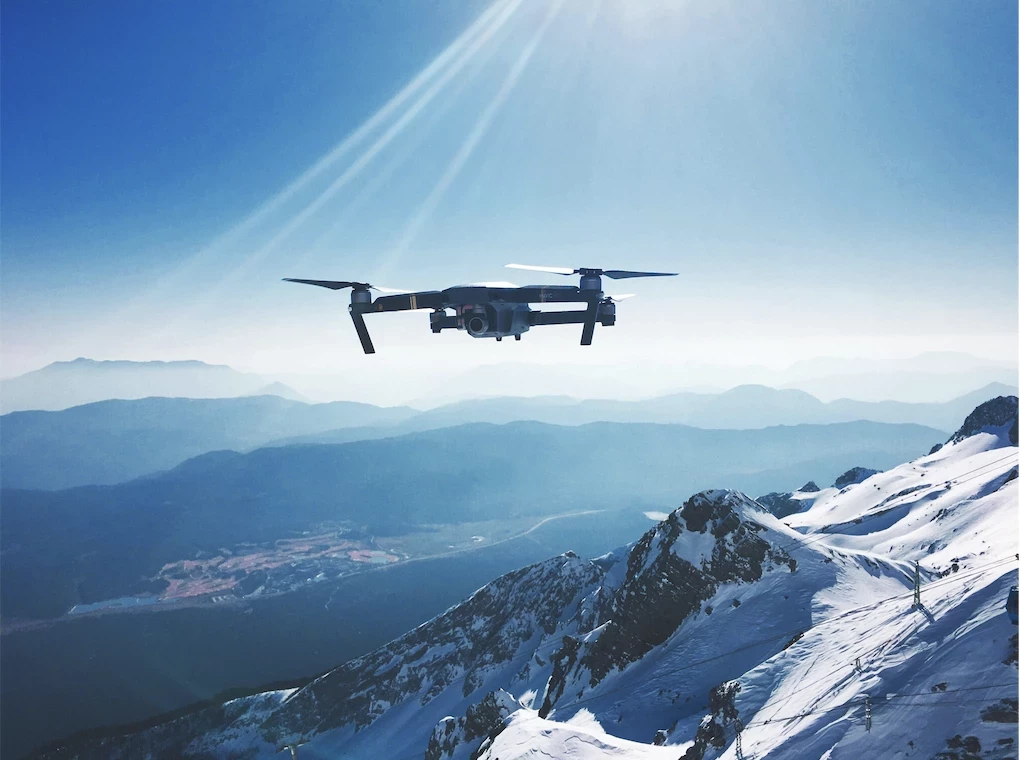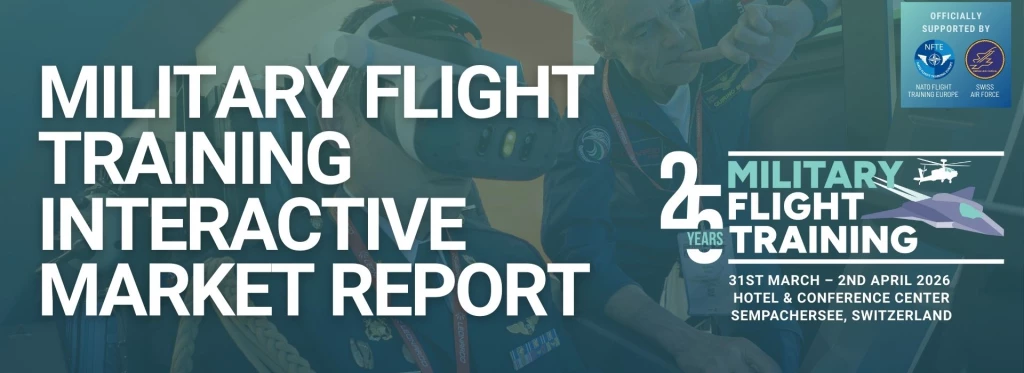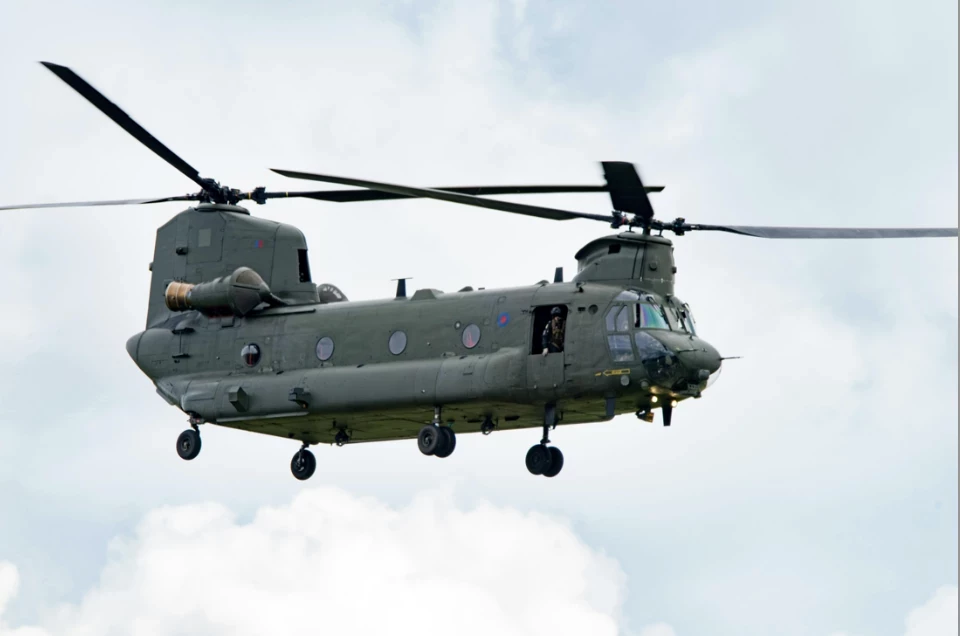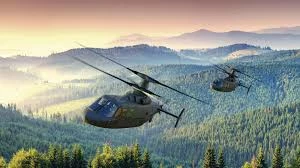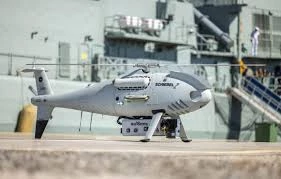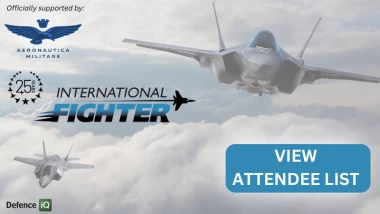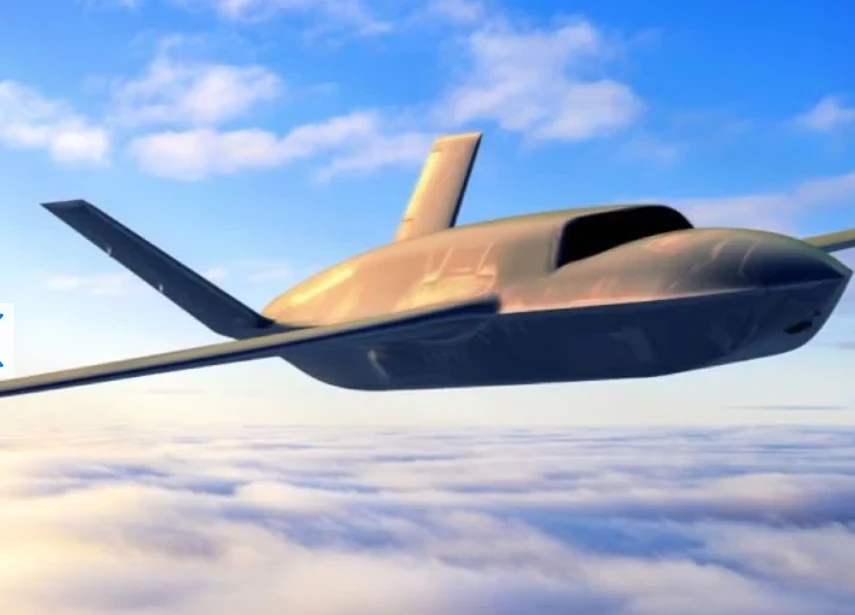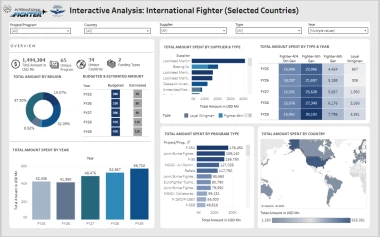Bell AH-1Z Vipers and Middle East Contracts [Interview]
Following the confirmation of Bahrain’s order for 12 Bell AH-1Z Vipers, Bell Helicopters managing director of the Middle East & Africa, Sameer Rehman, spoke to Defence IQ about the wider scope and current status of Bell's various platforms and projects.
Add bookmarkInterview: Bell to complement the ‘Zulu’ with a light-attack 429
(This article originally appeared in DIB issue 20)
Defence iQ: What was agreed between Bell, US DSCA (Defense Security Cooperation Agency) and the Royal Bahraini Air Force (RBAF)?
Rehman: The RBAF Air Vice-Marshal, Sheikh Hamad bin Abdullah bin Al Khalifa, confirmed 12 AH-1Z Zulu Cobras for the air force. This procurement comes six months after the US Department of State approved the deal under the FMS process. In fact, that is why LtGen Hooper was also in attendance.
This deal – which is the first export of its type – has a value of $911.4 million and the aircraft will be delivered in the second half of 2022. Furthermore, CEO of Bell, Mitch Snyder, also surmised that the Zulu represents one the most advanced helicopters in production and they would help protect the Kingdom for many decades. Amongst its most sophisticated features include a weapon-system that is proficient in engaging air-targets and a target-acquisition-system that is one of the most precise systems integrated into a rotary-wing platform
"This deal – which is the first export of its type – has a value of $911.4 million and the aircraft will be delivered in the second half of 2022"
Bell Helicopter types. Image. G. Mader
Defence iQ: Aren’t Pakistan also planning to use the aircraft?
Rehman: The US government halted all FMS-deals to Pakistan, and these aircraft have been placed in storage. Furthermore, the AH-1Zs that have been built for Pakistan is not the same aircraft that is being built for Bahrain. The RBAF is receiving a completely different aircraft
Defence iQ: What is the market potential for the ‘Zulu Cobra’?
Rehman: We are hopeful that we can build on Bahrain‘s export success. There is interest in the AH-1Z from the UAE, Australia, Brazil, Croatia, Czech Republic, Japan, Malaysia, Poland and Thailand. In addition, Romania has issued a letter of request to buy 21 Bell UH-1Y ‘Venoms’ and 24 AH-1Z ‘Vipers’. From what we hear, Romania’s’ leadership is acting with a level of speed and rigour that is unmatched across Europe.
RECOMMENDED: Future military helicopters: Survivability, threats and autonomy [Interview]
In October 2017, our CEO spoke to Romania’s defence-minister in DC to discuss future collaborations with the Romanian Armed Forces, with a focus on our H-1 platform around overhauled and transferred AH-1W. His delegation was also briefed on our innovative technologies focus for Advanced Tiltrotor Systems.
It’s safe to say Romania has a robust aviation industry, and we are interested in working with IAR Brasov for the H-1 program. The same can be said for the Czech Republic.
Defence iQ: You mentioned Japan. That is a very interesting market.
Rehman: I agree. But, it is a well-known market for Bell. We were the first OEM to deliver military helicopters in 1954 to the JGSDF and since then, we have delivered 1,500 aircraft in Japan, including the UH-X and V-22 for the JGSDF programs. Did you know that the BELL-505 is already operated by the Japanese Coast Guard for training? In addition, the Bell-429 is used by air medical teams like Naka Nikhon Air Services and Nishi Nippon Airlines. Both, Japan and Thailand, are operators of legacy Bell models - presenting an obvious path to future sales.
"There is interest in the AH-1Z from the UAE, Australia, Brazil, Croatia, Czech Republic, Japan, Malaysia, Poland and Thailand"
Bangkok intends to replace its fleet of eight AH-1F Cobras; meanwhile, Tokyo will phase out the 71-strong inventory of AH-1S helicopters - built by former Fuji Heavy Industries [now Subaru] - under its recently launched AH-X contest. Any deal with Japan is likely to include a significant industrial component. Its previous UH-X competition for 150 utility helicopters was won by a Bell/Subaru team with a modified version of the 412EPI, which will also be locally manufactured.
Defence iQ: Can you tell us about the market in Australia?
Rehman: From what I hear, there will be strong competition. As Canberra considers options to replace its fleet of 22 Airbus ‘Tigers’ in the mid-2020s, expectably, there will be competition from Airbus and Boeing, the latter with the AH-64E Apache. However, the AH-1Z has a built-in ‘marinisation’ from the expeditionary operations of the USMC. That could be a key consideration for the Australians, who want the aircraft to operate from their amphibious assault ships.
Defence iQ: What can you tell us about the Bell-429, regarding governmental and military use?
Rehman: The ‘429’ was designed to be a multi-mission helicopter, not only for corporate charter but for law-enforcement and coast-guards etc. Accumulatively, all 300 delivered ‘429s’ recently accomplished 330.000 flying-hours. It was certified to amendment 44 of Part-27 rotorcraft. With that comes advanced technology, a four-axis autopilot and a very powerful P&W207 engine-package. The fleet has seen a mix of parapublic, corporate and a little military usage. Our base for this model is well diversified.
"The ‘429’ was designed to be a multi-mission helicopter, not only for corporate charter but for law-enforcement and coast-guards"
In our region, the ‘429’ is operated by several agencies in both training and law-enforcement capacities. For example, a Kuwaiti agency is flying it in the EMS-role. In addition, the aircraft can be configured with a hoist, clamshell doors and a variety of customer-defined equipment. But most important, it is full IFR-helicopter which can be safely operated by one pilot, which is instrumental in navigating Category-A conditions with an integrated avionics glass cockpit.
RECOMMENDED: Will the Airbus H145M be Europe’s future light helicopter? Part 1
Defence iQ: The ‘429’ may be a possible solution for other European countries such as Austria. The full-IFR capabilities would be particularly beneficial with twin-engines because of the high-altitude, mountainous topography as well.
Bell-429 of Jamaica Defence Force. Source: JDF
Rehman: Indeed. The ‘429’ is operated successfully in high-altitudes and mountainous geography by Swiss EMS ‘Air Zermatt’ in an alpine SAR-role! Also, the Canadian Coast Guard uses a mix of 16 ‘429’ and ‘412’ in very extreme conditions. Another operator is Jamaica. Two ‘429’s were delivered to the Jamaica Defence Force (JDF) in summer 2018, with a third scheduled for 2019. They will be used to complete a range of missions including, search and rescue, medical evacuations, natural disaster relief, national security and military training.
Defence iQ: Is Australia a governmental user?
Rehman: Yes, the Royal Australian Navy uses the ‘429’ as a training helicopter. Other police forces include the Indonesian Police, the Swedish National Police, and the Philippine Police, the Royal Thai Police, the NYPD, the Turkish Jandarma and the Slovak Police service. Indeed, the ‘429’ is a success story all over the world, embedded in more than 920 law enforcement or governmental configured Bell aircraft.
Defence iQ: There was a sand-brown model of an armed ‘429’ at the last IDEX in Abu Dhabi. If a customer requests weaponisation, would it be similar to the UAE’s ‘407MRH’, with an integrator like ‘Northstar’?
Rehman: There are armed ‘407’s in use by nations all over the world, such as Iraq. In Iraq’s case, October saw the US DSCA delivered the required certification notifying Congress of a possible FMS-sale to Iraq of five Bell 407GX helicopters, together with the associated rocket launchers, machine guns and countermeasures. This will help compensate for the combat loss of seven IA407 helicopters in recent years.
The ‘GX’ is an upgrade from the current IA407 configuration and also includes the Advanced Precision Kill Weapon System (APKWS) launchers known from the AH-1Z. I should also add we have recently completed successful Bell 407GXP high-altitude demonstrations on the Chinese Qinghai-Tibet Plateau. Without a doubt, the 407 is a helicopter designed for harsh environments, whether it is cold, hot or high altitude, the aircraft is consistently reliable and efficient.
RECOMMENDED: Thales on turning dumb rockets into smart missiles
Defence iQ: What weapons can be mounted on the ‘429’?
Rehman: We have a long-term plan to develop a militarized ‘429’, but we are still focusing on our twin-engine light-attack helicopter configuration.
With the ‘heavy punch’ solution we officially confirmed today with the 12 AH-1 ‘Zulu’ for the RBAF, we want to complement that with the light-attack element based on the ‘429’. It is a big subject not only with countries in Europe but also here in the Middle-East. We are able to respond to such RFPs with our variety of platforms.
Defence iQ: Like the demand for door-guns, for example?
Rehman: There are door-guns on the ‘407’. A standard package of armament for a military or weaponized helicopter could involve .50 calibre, or 7,62mm guns and ‘Hellfire’-type missiles like on the AH-1Z. The ordinance you see on a ‘Zulu’, you may also see on a light-attack platform proposed by Bell.
Bell-407GX UAE Northstar armament. Source: Mader
Defence iQ: We witnessed a live-firing in Hungary of AIRBUS’ H-145M, with guns and unguided as well as laser-guided rockets [See Defence iQ #19 p. 18-24]. A similar package on a ‘429’ would be great to see.
Rehman: Interesting! How was the demonstration?
Defence iQ: Not as loud as I anticipated! But, the laser-guided ‘Hydra’ was very precise. And the flares were nice, of course. Where will newly manufactured ‘429’ aircraft be manufactured?
"We have a long-term plan to develop a militarized ‘429’, but we are still focusing on our twin-engine light-attack helicopter configuration"
Rehman: The airframes of our ‘429’s are all manufactured in Canada since the production certificate is held by our Canadian facility. However, they can be outfitted or customized to specific requests in our Prague-facility and Singaporean-facility.
Defence iQ: Mentioning Prague, didn’t Bell recently secure its first export sale of the UH-1Y ‘Venom’ in the country
RehmanN: 12 UH-1Y ‘Venom’ aircraft were selected by the Czech Republic in 2017 to replace their Mi-24s, but after elections and changes in the administration to the current Czech government, the process towards finalisation has been re-started and we are supporting this.
Similarly, in October 2017, the US State Department cleared the sale of the platform, associated weapons and other equipment to Prague to satisfy its requirements. This approval arrived 17 months after a memorandum of understanding (MOU) was signed between Bell and Czech industrial partners.
Bell-429 Slovak Police rearview camera inflight Mader
Defence iQ: The successor for the Bell 206 Jet-Ranger is the Bell-505. What can you tell us about the platform?
Rehman: The ‘505’ has over 400 orders as of now, with 100 delivered. We just hit 10,000 hours on the whole fleet. It has a full two-screen glass-cockpit and it enables cost-effective training. It is a turbine powered platform with a dual-channel FADEC, so you can skip the piston engine era once and for all.
Defence iQ: Interesting. Can you tell me more about the training facilities?
Rehman: Bell has a training academy in Texas where we offer ‘flight transition training’. For instance, if a buyer goes for the ‘505’, we would provide a two-week standard training course.
Many organisations around the world are looking into the ‘505’ as the entry-level trainer aircraft for more complicated aircraft like ‘412’, ‘429’ or ‘525’. The ‘505’ is very easy to fly, even for beginners to rotary aviation, and that is one of the major reasons it has garnered global attention. With regards to the flying-hours needed, it all depends on the pilot’s proficiency.
Defence iQ: Can you tell us about Bells other projects. In 2016, a super-medium ‘525’ was lost in a crash. What has happened to this program?
Rehman: The Bell-525 ‘Relentless’ super-medium helicopter was on a good path, but in July 2016 one of the flight-test aircraft suffered a fatal break-up in flight, forcing postponement of the test campaign for 12 months. Since then, the program resumed and we expect a fifth airframe to join the flight-test fleet in the first quarter of 2019. The program remains on track for certification before the end of the year.
"Many organisations around the world are looking into the ‘505’ as the entry-level trainer aircraft for more complicated aircraft like ‘412’, ‘429’ or ‘525’. The ‘505"
Defence iQ: One other fascinating project Bell is undertaking is the tilt-rotor V-280 ‘Valor’. What is the status of this program?
Rehman: I’m not in the ‘Valor’ program myself, but it was recently communicated that it was recognised in Popular Science’s “Best of What’s New Award in the Aerospace category” for 2018. The award recognises the rapid progress being made to bring revolutionary aircraft to the battlefield.
Similarly, the Society of Flight Test Engineers awarded the team working on Valor the best paper award in the category “Certification at Warp Speed,” at their 49th International Symposium. The program has achieved high-performance with the latest in vertical and fixed-wing flight in fewer than five years.
"It has a full two-screen glass-cockpit and it enables cost-effective training"
As part of a government technology demonstration partnership, the Bell V-280 Valor has been flying since late 2017 and is making steady progress through flight tests, including multiple flights with Army test pilots.
RECOMMENDED: How the APKWS is improving the Hydra-70: BAE Systems interview
In less than a year of flight-testing, the V-280 has already has flown more than 70 hours and reached speeds that far outpace similarly sized helicopters, while showcasing extraordinarily low-speed agility.
Defence iQ: Bell has opened a new facility at Arlington. What exactly is the purpose of this facility?
Rehman: Indeed. This facility is our expanded Flight Research Center (FRC), where state-of-the-art facility developments such as new cockpit interfaces are developed and tested. It houses many of our newest technology and innovation, such as the V-280 ‘Valor’, 525 ‘RASIL’, V-247 ‘Vigilant’ – with a simulator to be installed in the coming years for this unmanned solution – and the Autonomous Pod Transport (APT).
Royal Australian Navy Bell429 in rope-exercise. Source: RAN
It was at this site Bell pioneers completed some of our numerous aviation milestones. For example, the AH-1T+ ‘SuperCobra’, the backbone of the USMC attack helicopter fleet for decades, made its first flight there in 1983. That same year the Bell OH-58-Armed ‘Kiowa Warrior’ prototype also achieved first flight. FRC also was the focal point for early tiltrotor research aircraft, that innovative V-22 concept that combined the best features of the helicopter achieved first flight at this same location in 1989.
Defence iQ: Thank you for speaking with Defence iQ. Good luck for the future!










